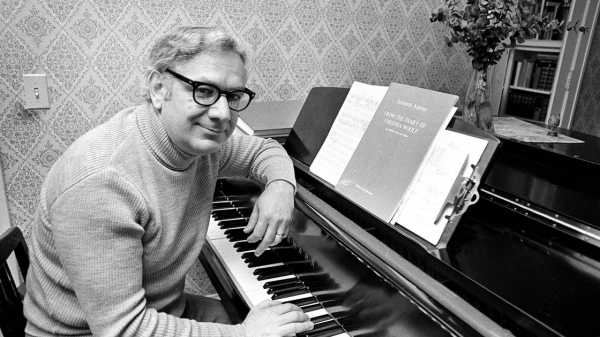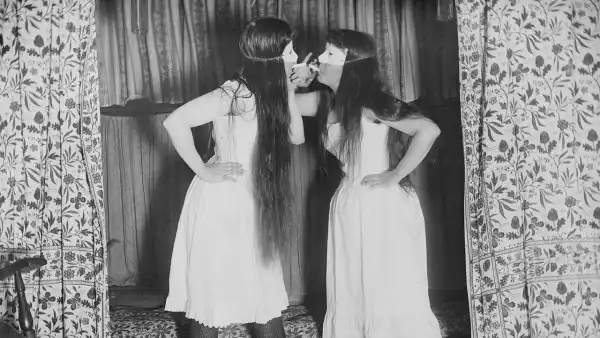
In the last couple of years, several icons of the state of Minnesota—think Keillor, Franken, Klobuchar—have got a bit scuffed on the road to glory. Not Dominick Argento, America’s leading composer of lyric opera, who died last week, at ninety-one, at his home in Minneapolis, a city that embraced and supported his music and career for more than half a century. Because I was one of his last students in composition at the University of Minnesota (he completed his long career there, in 1997), I developed a certain angle on the man and his enduring music.
The term “lyric” fuels the approbation “lyrical,” meaning music that is attractive, melodic, and grateful on the ear. In other words, pretty. There’s a lot of pretty music around these days, but beautiful—beauty that radiates from the music’s very bones—is something much more rare. Argento’s best music has this. It springs not only from his interlocking mastery of every element of classical composition—harmony, counterpoint, orchestration, form—but from his acute sensitivity to the setting of words and a deep understanding of how human emotion is translated into rhythm and tone. That understanding came partly from the fact that his wife, Carolyn Bailey, was an operatic soprano of considerable talent who served as her husband’s critic, adviser, and muse. But it also came from Argento’s connection to the great lyric tradition, a line that goes back to the beginnings of opera, in seventeenth-century Venice.
He was linked to this tradition in a fundamental way that America’s two leading operatic paragons, John Adams and Philip Glass, are not. To be fair, their music is more sui generis; in such minimalist masterpieces as “Nixon in China” and “Satyagraha,” molds were broken and new, specifically American traditions were formed. Argento’s music, however, strives not for originality but for sympathy. In a work like “The Aspern Papers”—his supreme opera, a daring adaptation of the Henry James novella for which he made his own libretto—Argento records the quick and subtle fluctuations of his characters’ emotions while maintaining an unbreakable underlying flow of energy and melodic line. (When I teach Monteverdi’s mini-opera “Combattimento di Tancredi e Clorinda” to my students, in Nashville, I hear Dominick’s music, buried deep.) “Nixon” may be an even greater opera than “Aspern,” but Adams’s Dick Nixon would be a hectoring cardboard cutout without Alice Goodman’s rich, pliant, and multi-referential text. His music and her words move in tandem, joined for mutual advantage. But in Argento’s resurrection of James’s Jeffrey Aspern—now a composer, not a writer—the fusion is intimate, seamless, and complete.
“Aspern” got a glorious, star-studded world-première production at the Dallas Opera, in 1988. (The PBS “Great Performances” telecast has long been available on YouTube. It’s a fine evening’s entertainment, with a bottle of Barolo nearby.) The opera’s first seven minutes refine a technique that Argento had foreshadowed in his two renowned monodramas for voice and piano, “From the Diary of Virginia Woolf” (written for Janet Baker, in 1974) and “The Andrée Expedition” (1982). Listen to how the music unfolds: passages that slyly verge on atonality are linked like gossamer chains to hinge moments of pure tonal euphony, each expressing a clear dramatic point. I like to think of it as “canal form”: you may stroll along the stone shoulders of Venetian waterways for many an absentminded moment, but you can wander only so far before reaching one of those consoling yellow signs, like “ALLA FERROVIA” or “PER RIALTO,” that direct you back to the place the city fathers intended. (After Florence, Venice was Argento’s favorite European city.)
These two contrasting impulses—the yearning for fantasy and the necessity of control—form the fulcrum of Argento’s art, and help explain why the composer and his community found one other so appealing. In 1971, Argento, teaming up with some of the talented colleagues with which, under the umbrella of the Walker Art Center, he had founded the Center Opera of Minnesota (which eventually became the Minnesota Opera), created “Postcard from Morocco,” a surreal chamber opera that was as valid a contribution to the American avant-garde as were the more fractiously provocative speech-operas of Robert Ashley. (Some of that avant-garde spirit leeched into “In Praise of Music,” from 1977, Argento’s finest work for orchestra.) The piece made his national reputation, but audiences, unlike critics, were not uniformly approving of it, and Argento never went that “far out” again. As Mary Ann Feldman, the annotator, lecturer, and all-around eminence blanche of the Minnesota Orchestra for several decades, put it in 1999, “Edo”—de Waart, the orchestra’s music director from 1986 to 1995—“came here thinking that because Minneapolis is the home of the Walker Art Center and a lot of experimental theatre, audiences would be receptive to bold contemporary programming. Well, they’re not.” (In a poetic twist, Feldman died just two days before Argento did, Lee Radziwill to his Karl Lagerfeld.)
Argento, a warm and brilliant but tough-minded man from a working-class background, understood this, I think, and “Virginia Woolf”—which won the Pulitzer Prize that “Postcard” had laid the groundwork for—marks, for all its durable satisfactions, a cunning tactical retreat. Argento’s melodic gift, while fluent and abundant, was not quite as distinctive as those of Samuel Barber and Ned Rorem, the two American neo-Romantics with whom he is most easily compared. But his dramatic instincts were far more sure. Under his watchful care, characters in extreme situations—the isolated, suicidal Woolf, the doomed polar explorers of “The Andrée Expedition,” Aspern’s crazed and aged lover, Juliana Bordereau—become domesticated and relatable, and, getting to know them, we feel a little less extreme ourselves. Argento’s works are elegant and deftly fashioned vessels for their souls.
Sourse: newyorker.com






